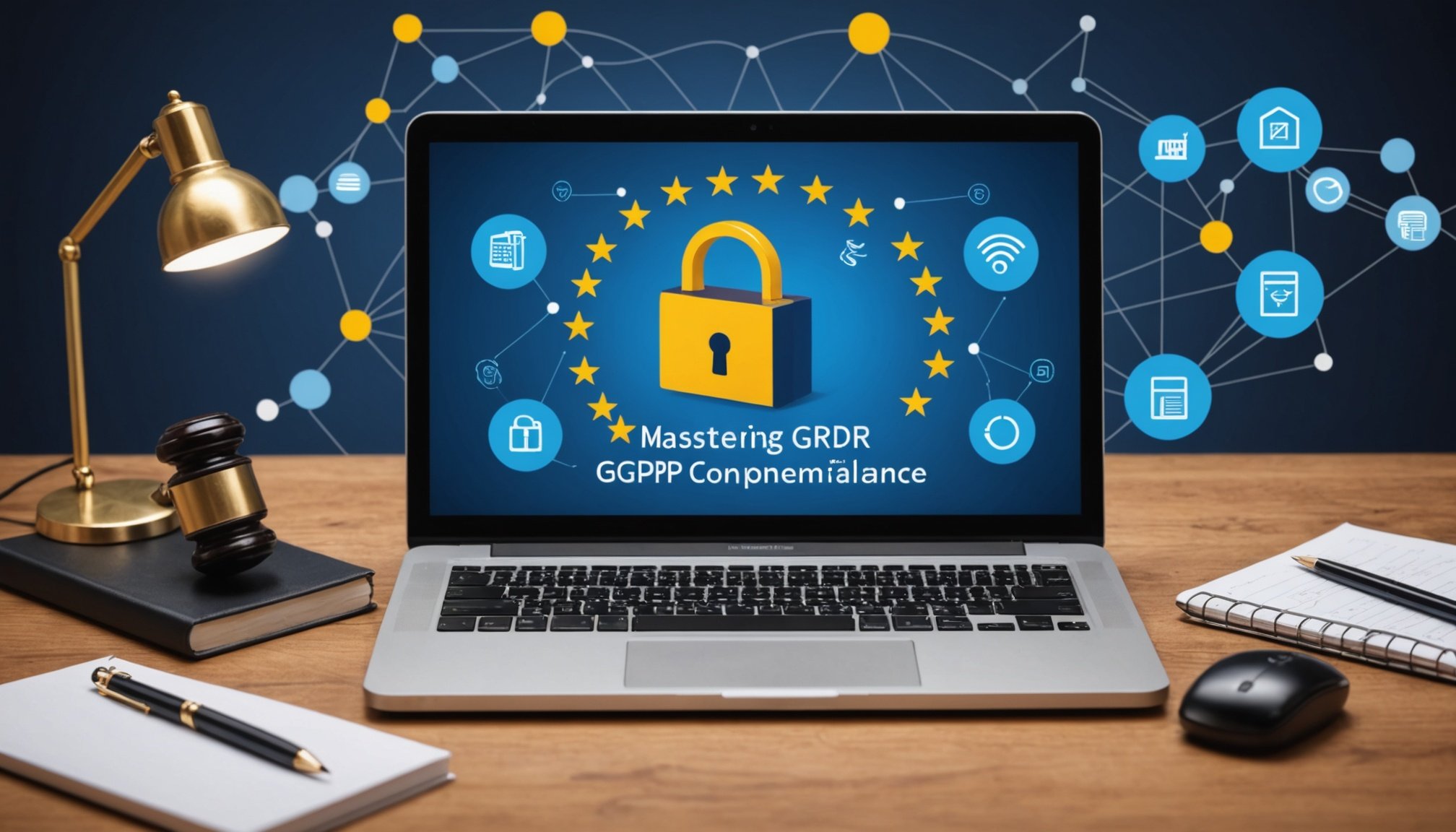Mastering GDPR Compliance: Essential Steps for E-commerce Sites in the UK
In the ever-evolving landscape of e-commerce, ensuring compliance with the General Data Protection Regulation (GDPR) is not just a legal necessity but a crucial step in building trust and fostering long-lasting relationships with your customers. Here’s a comprehensive guide to help you navigate the complexities of GDPR compliance, tailored specifically for UK e-commerce businesses.
Understanding GDPR and Its Impact on E-commerce
The GDPR, which came into effect on May 25, 2018, is a significant legal framework that governs data privacy and protection in the European Union (EU). Although the UK has left the EU, the GDPR continues to apply under UK law through the Data Protection Act 2018. This means that any e-commerce business operating in or serving customers from the UK must adhere to these strict guidelines on the collection, processing, and storage of personal data.
Also to read : Essential Data Privacy Strategies for UK Healthcare Providers: Best Practices Revealed
The primary aim of the GDPR is to give individuals greater control over their personal data. It emphasizes transparency, requiring businesses to clearly communicate how data is used, ensuring informed consent, and allowing users to access and manage their data. Non-compliance can lead to substantial fines and severe damage to your brand’s reputation.
Implementing Robust Data Protection Measures
Protecting personal data is fundamental to GDPR compliance. Here are some key measures you need to implement:
Have you seen this : Hydrogen storage solutions: unpacking delphy's innovations
Data Encryption
Encrypting personal data both in transit and at rest is crucial. This ensures that even if data is intercepted or accessed unlawfully, it remains unreadable. Using strong encryption protocols and regularly updating them is a critical component of data protection.
Secure Data Storage
Store personal data in secure environments with restricted access. Implementing multi-factor authentication (MFA) and regular security audits can help identify and mitigate potential vulnerabilities. Data minimization practices, where you only collect and store data necessary for your operations, are also essential.
Regular Security Training
Educate your staff about data protection principles and the importance of GDPR compliance. Regular training sessions can help ensure that employees are aware of the latest security threats and best practices to protect personal data. This includes training on how to handle data breaches and the procedures for reporting incidents.
Ensuring Informed Consent and Transparency
Informed consent is a cornerstone of GDPR compliance. Here’s how you can ensure you are meeting these requirements:
Consent Collection
Consent must be explicit and freely given. Consent boxes cannot be pre-checked, and customers must actively tick the boxes to indicate their consent. Use separate checkboxes for different types of consent, such as marketing emails and newsletter subscriptions.
Transparency in Data Use
Be clear and transparent about why you are collecting data and how it will be used. If you are collecting data to improve customer shopping experiences through personalized product recommendations, make sure to communicate this clearly. Transparency builds trust and helps customers feel more comfortable sharing their data.
Managing Data Subject Rights
The GDPR grants data subjects several rights, including the right to access, rectify, erase, restrict processing, object to processing, and data portability. Here’s how you can manage these rights effectively:
Right to Access
Ensure that customers can easily access their personal data. Provide a clear mechanism for them to request access, and respond promptly to such requests.
Right to Erasure
Allow customers to request the erasure of their personal data. This includes removing their data from all systems and databases where it is stored.
Right to Object
Give customers the option to object to the processing of their personal data for marketing purposes or any other purpose that is not necessary for the performance of a contract.
Here is a detailed list of data subject rights and how to manage them:
- Right to Access: Provide customers with a copy of their personal data upon request.
- Right to Rectification: Allow customers to correct any inaccuracies in their personal data.
- Right to Erasure: Delete personal data upon customer request.
- Right to Restrict Processing: Limit the processing of personal data under certain conditions.
- Right to Object: Allow customers to object to the processing of their personal data for marketing or other purposes.
- Right to Data Portability: Enable customers to transfer their personal data to another service provider.
Appointing Key Roles for GDPR Compliance
The GDPR requires certain roles to be established within your organization to oversee compliance:
Data Controller
The data controller is responsible for determining the purpose and lawful basis for the processing of personal data. They ensure that outside contractors are GDPR-compliant and oversee the overall data protection strategy.
Data Processor
The data processor is responsible for processing personal data on behalf of the data controller. They collaborate with the data controller to ensure compliance with GDPR requirements.
Data Protection Officer (DPO)
The DPO is appointed by the data controller and data processor to oversee data protection and monitor GDPR compliance. The DPO is responsible for training staff, raising awareness about GDPR, and ensuring that the organization complies with all relevant regulations. The DPO is mandatory for public authorities, large-scale personal data processing, and systematic monitoring of data subjects.
Regular Updates and Compliance Checks
Given the dynamic nature of data privacy laws and practices, it is crucial to regularly review and update your privacy policy. Here are some steps to ensure ongoing compliance:
Reviewing Privacy Policies
Notify users of any significant changes to your privacy policy and ensure they are aware of their rights and your responsibilities. Update the content and language of your privacy policy to be relevant, easy to access, and easy to understand.
Conducting Data Audits
Conduct regular data audits to understand the personal data you collect, how it is processed, stored, and transmitted. Classify the data based on its sensitivity and determine its flow through systems, networks, and databases.
Training and Awareness
Provide initial and refresher training about GDPR guidelines to your staff. This includes training on the latest security threats and best practices to protect personal data. Document these training sessions to ensure compliance.
Communicating Your Commitment to Data Privacy
Transparency is key to building trust with your customers. Here’s how you can communicate your commitment to data privacy effectively:
Clear Privacy Policies
Update your privacy policies with clear and concise language. Ensure that the policies are easy to access and understand. Use plain language to explain how data is collected, stored, and used.
Consent Forms and Opt-Out Mechanisms
Use cookie-consent forms and establish double opt-in for email sign-ups. Offer opt-out mechanisms and publish an FAQ section for data collection and privacy practices. This helps customers understand their rights and how they can exercise them.
Transparency in Marketing Campaigns
Be transparent in your marketing campaigns about the data collection practices. Clearly communicate why you are collecting data and how it will be used. This transparency helps in building trust and fostering long-lasting relationships with your customers.
Financial Penalties and Compliance Risks
Non-compliance with GDPR can result in significant financial penalties. Here are some key points to consider:
Severity of Penalties
The maximum fine for violating GDPR rules is 4% of a company’s annual global turnover or €20 million. The Information Commissioner’s Office (ICO) considers several factors when deciding whether to levy a fine, including the severity and length of the data breach, the type of personal data compromised, and whether the breach was negligent or intentional.
Impact on Reputation
Data breaches not only result in financial penalties but can also severely damage a company’s reputation. Maintaining compliance is essential to avoid these risks and ensure customer trust.
Here is a comparison of the financial penalties under GDPR and the previous Data Protection Act:
| Regulation | Maximum Fine |
|---|---|
| GDPR | 4% of annual global turnover or €20 million |
| Data Protection Act | £500,000 |
Best Practices for GDPR Compliance
Here are some best practices to ensure GDPR compliance:
- Data Minimization: Only collect and process the data that is necessary for your operations.
- Privacy by Design: Implement data protection principles from the outset of any new project or system.
- Regular Audits: Conduct regular security audits to identify and mitigate potential vulnerabilities.
- Staff Training: Provide regular training to staff on GDPR compliance and data protection principles.
- Clear Consent: Ensure that consent is explicit and freely given, with separate checkboxes for different types of consent.
- Transparency: Be transparent about data collection practices and how data is used.
- Data Subject Rights: Ensure that customers can easily exercise their rights under the GDPR.
Practical Insights and Actionable Advice
To make GDPR compliance more manageable, here are some practical insights and actionable advice:
Learn Through Webinars and Resources
Participate in webinars and use resources like eBooks and infographics to learn more about GDPR compliance. These can provide valuable insights and best practices to help you navigate the complexities of GDPR.
Use Compliance Tools and Certifications
Consider using tools like Europrivacy, which provides a comprehensive framework for GDPR compliance. Europrivacy offers formal certifications under Art. 42 GDPR, helping you reduce legal and financial risks while demonstrating your commitment to data protection.
Engage with Customers
Communicate clearly with your customers about your data collection practices. Use plain language in your privacy policies and ensure that customers understand how their data is used. This transparency helps in building trust and fostering long-lasting relationships.
Ensuring GDPR compliance is not just a regulatory obligation; it is an opportunity to build trust and foster long-lasting relationships with your customers. By prioritizing data protection, securing informed consent, facilitating data subject rights, and developing a comprehensive privacy policy, you demonstrate a commitment to transparency and data protection.
In the words of a GDPR compliance expert, “GDPR compliance is not a one-time task; it is an ongoing process that requires continuous monitoring and updates. By adopting best practices and staying informed, you can ensure that your e-commerce business remains compliant and trusted by your customers.”
By following these essential steps and best practices, you can master GDPR compliance and set your e-commerce business apart in a competitive market where data privacy is increasingly valued. Remember, compliance is not just about avoiding fines; it’s about building trust and respect for your customers’ rights.


















